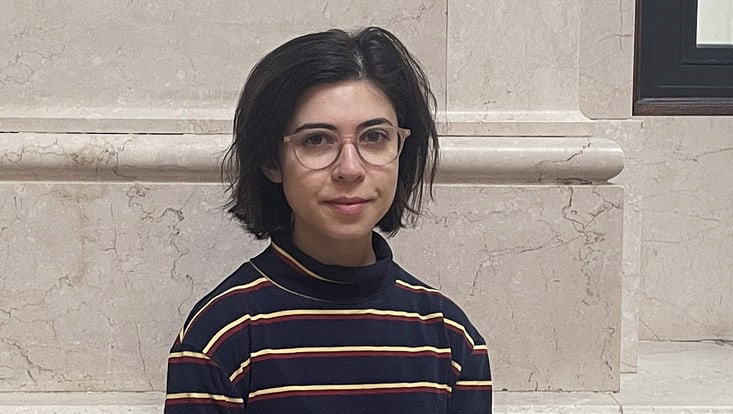Sarah Rosenthal, M.A.

Curriculum
Sarah C. Rosenthal is a PhD Candidate in History of Art and Architecture at Harvard University. Her focus is early modern European art North of the Alps, but she also writes about modern and contemporary art. Sarah Rosenthal’s research interests revolve around the roles of material culture in relation to military activity, the relationship between power and hermeneutics, structures of liberty and constraint in relation to art, and questions about the politics and ethics of artistic practice more broadly. During her fellowship with the DFG-Centre for Advanced Studies Imaginaria of Force, Sarah Rosenthal will be working to complete her dissertation and co-leading a two-day seminar at the University of Bern focused on medieval and early modern flags and banners. Sarah Rosenthal’s work has previously benefitted from residencies and fellowships at eikones—the Center for the Theory and History of the Image at the University of Basel—and at the Bibliotheca Hertziana in Rome. She holds an AB from Harvard University and an MA with Distinction from The Courtauld.
Publications (selection)
- “Loot/Tool: Urs Graf, the Juliusbanner, and Inversions of Loot.” In Loot & Repair: Plunder and Restitution between the Early Modern Battlefield and the Modern-Day Museum, edited by Francesca Borgo and Julia Vázquez. Rome: Max-Planck-Gesellschaft, Lia Meitner Group, Officina Libraria (in preparation).
- “The Thorn’s Rose: Northern Renaissance Daggers, Gender, and a Crisis of Representation.” In Crisis in the Early Modern World. Warfare, Memory, Identity, edited by Anke Fischer-Kattner, Sonja Kleij, and Thom Pritchard. Disaster Studies. Amsterdam: Amsterdam University Press (under review).
- “Murky Waters: Hans Haacke’s Rhine-Water Purification Plant.” In October 190 (Fall 2024): 17–42.
- “Impressions of Imprisonment: David Alfaro Siqueiros’ 13 Grabados.” In From Posada to Isotype, from Kollwitz to Catlett: Exchanges of Political Print Culture: Germany-Mexico, 1900-1968, edited by Benjamin H. D. Buchloh and Michelle N. Harewood, 342–47. Madrid, Spain: Museo Nacional Centro de Arte Reina Sofía, 2022.
Research project: Art and Power in Flux: Urs Graf and Artistic Sovereignty in Early-Sixteenth-Century Germanic Lands
This dissertation traces a thread of challenging and unusual tendencies in Swiss artist Urs Graf's artistic practice, proposing a framework for interpreting the role of image-making for a lucky, privileged individual in a conflictual, increasingly secular, moment. Despite Graf’s (c. 1485 – c. 1528) professions as a goldsmith and printmaker (and mercenary soldier), most of his surviving oeuvre are line drawings. Crucially, his art is idiosyncratically forceful and capricious. What was the role of this visual violence when the category of art was still being defined and artists’ subservience to patrons wavered? Mocking the precedent of Germanic masters’ art, much of Graf’s work pushes its own creator into view: with prominent monograms and virtuosic flourishes, Graf boasts of a carefree, unfettered artistic hand. Meanwhile, most of the subjects depicted are secular, from the whims of Fortuna to the irrationality of war to the people of Graf’s society. These images are overwhelmed by the visibility of their creator, his traumas, and the world of flux enveloping him. This dissertation proposes that understanding Graf’s art requires more than deciphering his images’ meanings. Instead, it is fruitful to approach it as a space in which the artist could experiment with agency and resist subservience. This art reveals what it looked like for a man to use his creative power to perform artistic sovereignty, a state of self-determination at once impressive and dangerous.
